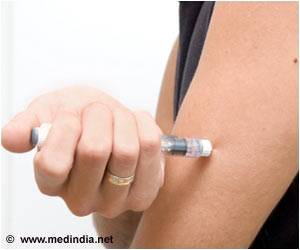
In many parts of the developed world as well as in many resource-poor settings, temperatures are higher than that.
During 28 days of exposure to the fluctuating temperatures, as well as for up to 12 weeks, no changes were seen in the physical structure, bioactivity, or appearance of insulin in vials or cartridges compared to insulin stored at temperatures of 2° to 8° C. This is true for both human insulin and analogue formulations.
These findings are important in low-resource settings, where patients who don’t have refrigerators in their homes and have to travel to and from a hospital or clinic twice daily to receive their insulin doses.
Senior author Leonardo Scapozza, PhD, professor of pharmaceutical biochemistry/chemistry at the University of Geneva, Geneva, Switzerland, said, “This shows it’s possible for the patient to treat themselves during the 4 weeks without having to put the insulin back in the fridge. If the temperature is oscillating, that’s not a problem.”
This study was co-conducted by humanitarian organization Doctors Without Borders / Médecins Sans Frontières (MSF) and they said, “For far too long, we were unable to send people with diabetes back to their homes with insulin due to its cold storage requirements. Some of these people were traveling long distances daily, and some even relocated to get their insulin injections at the clinic. With this new finding of no refrigeration requirement in a climate of up to nearly 99° F — and with a well-developed patient education and support program — people with diabetes in resource-limited and humanitarian settings will now be able to inject themselves in their homes. This greatly improves the significant disruption to their lives…. The ability to self-inject insulin is a fundamental aspect of diabetes self-management and the ability of people with diabetes to be empowered.”
However, after 4 weeks with continuous exposure to a temperature of 31° C (87.8° F), all insulin formulations began to degrade and showed diminished bioactivity. After 1 week of continuous exposure to 37° C (98.6° F), two of the insulin formulations began to degrade with continuous exposure to 37° C (98.6° F).
These findings support the current recommendations that the insulin in insulin pumps ― in which insulin is typically exposed continuously to body temperature ― should be replaced every 3 days.
READ RELATED: The best and worst hot cross buns for 2021
After degradation, insulin particles appear in the vial and these vials should not be used.
The authors said that it is important to keep insulin strictly at the recommended temperature of 4° C (39.2° F) before the 28-day period of use. It is important to maintain the cold chain.
This study shows that insulin remained stable for longer than 28 days ― in fact, for up to 12 weeks.
Scapozza said, “If you use one vial every 28 days, you can have three vials with you without any problem. If you have five vials and stay 12 weeks, then most likely the unused insulin can’t be used anymore…but you can see it [if the insulin degrades].”
After opening, insulin should not be frozen as the activity is gone within 1 day. Insulin is more sensitive to freezing than heat. After freezing, ice crystals form from water and they are very sharp destroy the structure of proteins.
Source: Medindia
Source:



